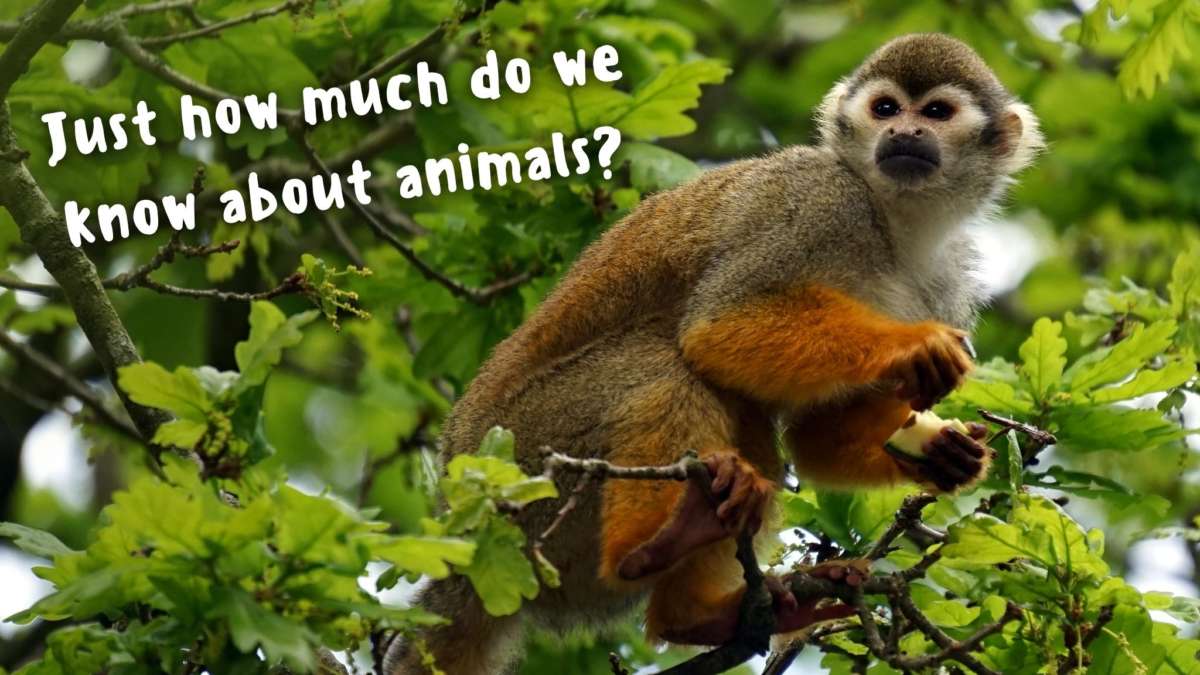Animals — we’re fascinated by them. We study them, name them and welcome them into our homes. From buying a $300 cat tree for your rescue kitten, to running your dog’s Instagram account, or even visiting the zoo just to catch a glimpse of an animal — it’s pretty clear that we’re infatuated with these creatures and want to learn everything we can about them.
So it’s not surprising to learn that our curiosity has bled into copious amounts of scientific research. After all, it is important to understand how these different species work and interact with our world alongside us. But some of these studies go far beyond simply noting these species names and natural habitats. We crave a deeper understanding of these animals; just how much do we understand about them? And how much do they understand about us?
It seems we’re not the only ones searching for those answers. These nine books all started as a question, a hypothesis desperate to be researched. Do animals feel emotions? Just how intelligent are they? Join these scientists, veterinarians and even anthropologists as they set out to determine just how much we have in common with our fellow creatures of the earth.
https://booktrib.com/wp-content/uploads/2022/02/Becoming-Wild.jpeg
Becoming Wild: How Animal Cultures Raise Families, Create Beauty, and Achieve Peace
by Carl Safina (Henry Holt and Co.)
If you posed the question of whether animals had culture, most people would say no. Our society’s concept of culture is a complex tapestry of traditions from family recipes to specific holidays. But animals have their own traditions too, however different they may be from our own. These tactics have been honed over countless generations in an effort to continue the species’ survival and has become customary in these wildlife societies. In this eye-opening account of his studies, ecologist Carl Safina suggests that animals have a much deeper sense of culture than we previously thought. By diving into the inner lives of three species — sperm whales, scarlet macaws and chimpanzees — and studying their intricate societies and traditions, Safina makes a compelling case for the intelligence and sophistication of these animals. Becoming Wild gives us a rare glimpse into the eyes of these incredible creatures and how they’re capable of far more than what we previously thought.
Amazon | Barnes & Noble | IndieBound | Bookshop
https://booktrib.com/wp-content/uploads/2022/02/are-we-smart-enough-to-know-how-smart-animals-are.jpeg
Are We Smart Enough to Know How Smart Animals Are?
by Frans de Waal (W. W. Norton & Company)
Many pet owners will proudly tell you that their Fido or Mittens is one smart cookie. But breaking into the locked cabinet for treats doesn’t mean that animals are capable of human-level intelligence … right?
It turns out that many of the abilities that we associate with human intelligence can be found reflected in the wild. From using tools to solving complex logic puzzles, animals show a level of intellect that we previously haven’t given them credit for. In this New York Times bestseller, biologist and primatologist Frans de Waal delves deep into just how little we’ve scratched the surface of animal intelligence. By discussing examples in a multitude of species — elephants, ravens, dolphins, octopi, wasps and chimps — de Waal challenges our previous conceptions of what animals are capable of. Readers will be swept away by this riveting and accessible dive into nature and the realization of just how much they understand.
Amazon | Barnes & Noble | IndieBound | Bookshop
https://booktrib.com/wp-content/uploads/2022/02/your-pet-your-pill.jpeg
Your Pet, Your Pill: 101 Inspirational Stories About How Pets Lead You to a Happy, Healthy and Successful Life
by Dr. Margit Gabriele Muller (HSH Press)
When it comes to what animals can teach us, it goes far beyond a better understanding of the animal world — our beloved pets can also teach us more about ourselves. Lauded Doctor of Veterinary Medicine Margit Gabriele Muller packs 101 incredible stories into this inspiring book. From a burn victim healing through her trauma thanks to her pet birds to a seven-year-old finding comfort in a three-legged dog that shares his own disability, every story pulls at the heart and drives home just how much our pets can heal our souls.
With every tale, Dr. Muller brings her professional expertise as well as some personal anecdotes. She shares how her own elderly uncle was able to find new physical and mental strength thanks to his beloved dog. It seems that in pursuit of companionship, we often end up finding a pet that will rejuvenate and transform our lives. These pets have the talent not only to teach us about their needs and wants, but also teach us about our own selves and what we’re capable of.
Read our full review of Your Pet, Your Pill here.
Amazon | Barnes & Noble | IndieBound | Bookshop
https://booktrib.com/wp-content/uploads/2022/02/chimpanzee-culture-wars.jpeg
Chimpanzee Culture Wars: Rethinking Human Nature alongside Japanese, European, and American Cultural Primatologists
by Nicolas Langlitz (Princeton University Press)
It all started in the 1950s when Japanese zoologists noticed that a group of macaques developed a new food-washing technique and spread the knowledge throughout their ranks. If the macaques could communicate and teach this learned behavior through their group, scientists wondered, what did this mean for the previous notions of animals’ social intelligence?
Anthropologist Nicolas Langlitz guides the reader through the controversial theories that spouted from this discovery. Some cultural anthropologists began to theorize that chimpanzees — and other primates — are capable of culture, but this proposal clashed with evolutionary anthropologists. As different factions of scientists butted heads, more studies quickly followed. By comparing findings in Japan to the Ivory Coast, Guinea, Germany and North America, Langlitz outlines both sides of the argument and the evidence to back it up. If you’re looking for a riveting tale of scientific debate and drama, look no further — this book will captivate readers with its interpersonal conflicts and fascinating finds.
Amazon | Barnes & Noble | IndieBound | Bookshop
https://booktrib.com/wp-content/uploads/2022/02/how-to-be-a-good-creature.jpeg
How to Be a Good Creature: A Memoir in Thirteen Animals
by Sy Montgomery (Mariner Books)
In this New York Times bestselling memoir, naturalist and adventurer Sy Montgomery ruminates on the animal relationships throughout her life, from her own pets to the wildlife she’s studied around the world. She introduces us to pinktoe tarantulas, octopi and tigers — but also her pet pig Christopher Hogwood and other beloved companions. As she recalls these thirteen animals — their triumphs, struggles and how they worked their way into her heart — she shows how friendship can transcend different species to create a truly memorable connection.
With enchanting illustrations by Rebecca Green, these thirteen tales transport the reader to the environments of these incredible creatures. Be prepared to be laughing out loud at one story and reaching for a tissue after another, since some of this book deals with the circle of life. Despite the occasional sadness, Montgomery comforts us with the knowledge that the connection we feel with animals is a two-way street.
Check out what else we have to say about How to Be a Good Creature here.
Amazon | Barnes & Noble | IndieBound | Bookshop
https://booktrib.com/wp-content/uploads/2022/02/when-elephants-weep.jpeg
When Elephants Weep: The Emotional Lives of Animals
by Jeffrey Moussaieff Masson and Susan McCarthy (Delacorte Press)
Any book labelled as “marvelous” by Jane Goodall is one we’re interested in! Authors Masson and McCarthy earn her endorsement of their sensational book When Elephants Weep, a compilation of studies that will change the way you think about the animal world. Gone are the old ideas of single-minded beasts solely focused on survival and lacking higher intelligence. In this eye-opening publication, a myriad of studies show the true range of emotions that can be found in the animal world.
From a shy gorilla with a penchant for playing with dolls to an Indian elephant able to communicate his feelings through facial expressions, animals continue to defy our expectations of their abilities. Masson and McCarthy’s tireless research affirms what many have suspected — when we underestimate animals’ capacity for emotional intelligence, we miss out on discovering the true depth of what these beings can do.
Amazon | Barnes & Noble | IndieBound | Bookshop
https://booktrib.com/wp-content/uploads/2022/02/we-walk-beside-you.jpeg
We Walk Beside You
by Sandra Mendelson (Little Black Paws Publishing)
In 2012, while doing body work on a horse, Sandra Mendelson received a series of messages from her equine client that dismantled her entire understanding of human versus non-human capabilities, perception and spiritual awareness and set her life on a course she could never have predicted. Over the next several years, over 53 species stepped forward to share what they want humans to know.
In this, her first book of the We Walk Beside You series, the animals correct our misconceptions about their behavior, reveal their intention and, mostly, offer their insights to help humans survive and thrive with more love, joy, sense of purpose and understanding. You may never look at a non-human the same way again.
Read what author Sandra Mendelson shares about her book here.
Amazon | Barnes & Noble | IndieBound | Bookshop
https://booktrib.com/wp-content/uploads/2022/02/when-animals-speak.jpeg
When Animals Speak: Toward an Interspecies Democracy
by Eva Meijer (NYU Press)
From wolves howling to birds chirping, we know that animals can communicate with each other to a certain extent. But just how complicated is their language?
According to researcher Eva Meijer, it turns out there’s a lot to learn from the way animals speak to one another. Not only do they warn each other of danger or squabble over food, but they also operate a political hierarchy. Geese, dogs, squids and worms — Meijer brings example after example to highlight her findings. Combining knowledge from science, philosophy and politics, the book outlines just how nuanced these animal relationships can be, both within their own groups and with other species entirely. With these revelations, Meijer encourages us to think about the way we interact with animals and to not underestimate their understanding. This thought-provoking read is sure to have readers thinking long after they’ve turned the last page.
Amazon | Barnes & Noble | IndieBound | Bookshop
https://booktrib.com/wp-content/uploads/2022/02/zoobiquity.jpeg
Zoobiquity: The Astonishing Connection Between Human and Animal Health
by Barbara Natterson-Horowitz and Kathryn Bowers (Knopf)
As so many of these books have told us, the similarities between animals and humans are striking. From feeling deep emotions to having complicated political hierarchies, animals show a number of traits that we previously thought only humans were capable of. The question is, what do we do with this kind of information?
Cardiologist Barbara Natterson-Horowitz, at least, has found a unique way of using this knowledge. In 2005 she was called to examine an Emperor tamarin at the Los Angeles Zoo. As she studied the monkey’s heart, she came to the realization that it was suffering from the same heart condition as some of her past human patients. Together with science journalist Kathryn Bowers, Natterson-Horowitz set out to document other similarities between animal and human conditions. The result was “Zoobiquity” — an approach to medical care that transcended species and revolutionized the way we look at health. The combination of research has helped develop new ways of treating conditions in both animals and humans — just one more example of the similarities between all of us creatures.
Amazon | Barnes & Noble | IndieBound | Bookshop
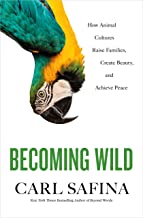
Becoming Wild: How Animal Cultures Raise Families, Create Beauty, and Achieve Peace by Carl Safina
If you posed the question of whether animals had culture, most people would say no. Our society’s concept of culture is a complex tapestry of traditions from family recipes to specific holidays. But animals have their own traditions too, however different they may be from our own. These tactics have been honed over countless generations in an effort to continue the species’ survival and has become customary in these wildlife societies. In this eye-opening account of his studies, ecologist Carl Safina suggests that animals have a much deeper sense of culture than we previously thought. By diving into the inner lives of three species — sperm whales, scarlet macaws and chimpanzees — and studying their intricate societies and traditions, Safina makes a compelling case for the intelligence and sophistication of these animals. Becoming Wild gives us a rare glimpse into the eyes of these incredible creatures and how they’re capable of far more than what we previously thought.
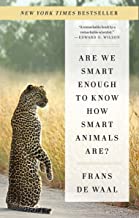
Are We Smart Enough to Know How Smart Animals Are? by Frans de Waal
Many pet owners will proudly tell you that their Fido or Mittens is one smart cookie. But breaking into the locked cabinet for treats doesn’t mean that animals are capable of human-level intelligence … right?
It turns out that many of the abilities that we associate with human intelligence can be found reflected in the wild. From using tools to solving complex logic puzzles, animals show a level of intellect that we previously haven’t given them credit for. In this New York Times bestseller, biologist and primatologist Frans de Waal delves deep into just how little we’ve scratched the surface of animal intelligence. By discussing examples in a multitude of species — elephants, ravens, dolphins, octopi, wasps and chimps — de Waal challenges our previous conceptions of what animals are capable of. Readers will be swept away by this riveting and accessible dive into nature and the realization of just how much they understand.

Your Pet, Your Pill: 101 Inspirational Stories About How Pets Lead You to a Happy, Healthy and Successful Life by Dr. Margit Gabriele Muller
When it comes to what animals can teach us, it goes far beyond a better understanding of the animal world — our beloved pets can also teach us more about ourselves. Lauded Doctor of Veterinary Medicine Margit Gabriele Muller packs 101 incredible stories into this inspiring book. From a burn victim healing through her trauma thanks to her pet birds to a seven-year-old finding comfort in a three-legged dog that shares his own disability, every story pulls at the heart and drives home just how much our pets can heal our souls.
With every tale, Dr. Muller brings her professional expertise as well as some personal anecdotes. She shares how her own elderly uncle was able to find new physical and mental strength thanks to his beloved dog. It seems that in pursuit of companionship, we often end up finding a pet that will rejuvenate and transform our lives. These pets have the talent not only to teach us about their needs and wants, but also teach us about our own selves and what we’re capable of.
Read our full review of Your Pet, Your Pill here.
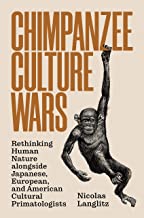
Chimpanzee Culture Wars: Rethinking Human Nature alongside Japanese, European, and American Cultural Primatologists by Nicolas Langlitz
It all started in the 1950s when Japanese zoologists noticed that a group of macaques developed a new food-washing technique and spread the knowledge throughout their ranks. If the macaques could communicate and teach this learned behavior through their group, scientists wondered, what did this mean for the previous notions of animals’ social intelligence?
Anthropologist Nicolas Langlitz guides the reader through the controversial theories that spouted from this discovery. Some cultural anthropologists began to theorize that chimpanzees — and other primates — are capable of culture, but this proposal clashed with evolutionary anthropologists. As different factions of scientists butted heads, more studies quickly followed. By comparing findings in Japan to the Ivory Coast, Guinea, Germany and North America, Langlitz outlines both sides of the argument and the evidence to back it up. If you’re looking for a riveting tale of scientific debate and drama, look no further — this book will captivate readers with its interpersonal conflicts and fascinating finds.
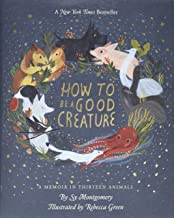
How to Be a Good Creature: A Memoir in Thirteen Animals by Sy Montgomery
In this New York Times bestselling memoir, naturalist and adventurer Sy Montgomery ruminates on the animal relationships throughout her life, from her own pets to the wildlife she’s studied around the world. She introduces us to pinktoe tarantulas, octopi and tigers — but also her pet pig Christopher Hogwood and other beloved companions. As she recalls these thirteen animals — their triumphs, struggles and how they worked their way into her heart — she shows how friendship can transcend different species to create a truly memorable connection.
With enchanting illustrations by Rebecca Green, these thirteen tales transport the reader to the environments of these incredible creatures. Be prepared to be laughing out loud at one story and reaching for a tissue after another, since some of this book deals with the circle of life. Despite the occasional sadness, Montgomery comforts us with the knowledge that the connection we feel with animals is a two-way street.
Check out what else we have to say about How to Be a Good Creature here.
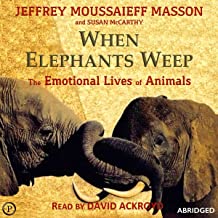
When Elephants Weep: The Emotional Lives of Animals by Jeffrey Moussaieff Masson and Susan McCarthy
Any book labelled as “marvelous” by Jane Goodall is one we’re interested in! Authors Masson and McCarthy earn her endorsement of their sensational book When Elephants Weep, a compilation of studies that will change the way you think about the animal world. Gone are the old ideas of single-minded beasts solely focused on survival and lacking higher intelligence. In this eye-opening publication, a myriad of studies show the true range of emotions that can be found in the animal world.
From a shy gorilla with a penchant for playing with dolls to an Indian elephant able to communicate his feelings through facial expressions, animals continue to defy our expectations of their abilities. Masson and McCarthy’s tireless research affirms what many have suspected — when we underestimate animals’ capacity for emotional intelligence, we miss out on discovering the true depth of what these beings can do.

We Walk Beside You by Sandra Mendelson
In 2012, while doing body work on a horse, Sandra Mendelson received a series of messages from her equine client that dismantled her entire understanding of human versus non-human capabilities, perception and spiritual awareness and set her life on a course she could never have predicted. Over the next several years, over 53 species stepped forward to share what they want humans to know.
In this, her first book of the We Walk Beside You series, the animals correct our misconceptions about their behavior, reveal their intention and, mostly, offer their insights to help humans survive and thrive with more love, joy, sense of purpose and understanding. You may never look at a non-human the same way again.
Read what author Sandra Mendelson shares about her book here.

When Animals Speak: Toward an Interspecies Democracy by Eva Meijer
From wolves howling to birds chirping, we know that animals can communicate with each other to a certain extent. But just how complicated is their language?
According to researcher Eva Meijer, it turns out there’s a lot to learn from the way animals speak to one another. Not only do they warn each other of danger or squabble over food, but they also operate a political hierarchy. Geese, dogs, squids and worms — Meijer brings example after example to highlight her findings. Combining knowledge from science, philosophy and politics, the book outlines just how nuanced these animal relationships can be, both within their own groups and with other species entirely. With these revelations, Meijer encourages us to think about the way we interact with animals and to not underestimate their understanding. This thought-provoking read is sure to have readers thinking long after they’ve turned the last page.
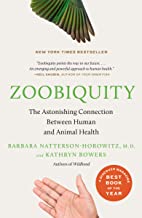
Zoobiquity: The Astonishing Connection Between Human and Animal Health by Barbara Natterson-Horowitz and Kathryn Bowers
As so many of these books have told us, the similarities between animals and humans are striking. From feeling deep emotions to having complicated political hierarchies, animals show a number of traits that we previously thought only humans were capable of. The question is, what do we do with this kind of information?
Cardiologist Barbara Natterson-Horowitz, at least, has found a unique way of using this knowledge. In 2005 she was called to examine an Emperor tamarin at the Los Angeles Zoo. As she studied the monkey’s heart, she came to the realization that it was suffering from the same heart condition as some of her past human patients. Together with science journalist Kathryn Bowers, Natterson-Horowitz set out to document other similarities between animal and human conditions. The result was “Zoobiquity” — an approach to medical care that transcended species and revolutionized the way we look at health. The combination of research has helped develop new ways of treating conditions in both animals and humans — just one more example of the similarities between all of us creatures.

